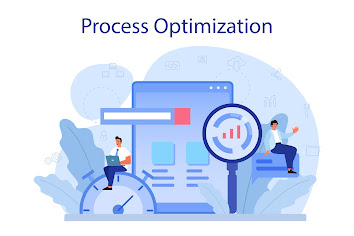Employers can manage staff members or even offer quick assistance and support in the right direction by using employee file management software. This tool can perform a variety of tasks in addition to managing documents, including acting as an expense claim tracker, an HR administration system. By managing licensing, filing documents, teaming up on files, and making life easier for staff members. Systems for managing employee files can help businesses save time.
Definition of Employee File Management Software:
Employee file tracking software is a software application that helps you to manage employee files and data, including payroll records and time. It allows you to easily access your employees’ information from anywhere, even if they are not in the office. There are many types of employee file management software that you can use. Some of them include:
The Role of Employee File Management Software in Ensuring Data Privacy and Security
As a tool to monitor employee data, reduce errors, and guarantee security. The use of employee file management software is gaining popularity. This is especially true as employers move toward more automated processes that rely on information from many different sources. Employee file management software can help ensure data privacy and security by helping you identify who has access to sensitive information, preventing unauthorized access, and maintaining the integrity of your records. It also allows you to automate key processes so that they are performed automatically.
Types of Online File Tracking System
Here are some of the famous online file-tracking systems are given below.
Employee Management Software
The employee management system is a type of software designed to help organizations manage their employees more effectively. This software often comes with tools for managing time and attendance, payroll, benefits, and performance, all of which aid firms in streamlining their HR procedures and boosting overall efficiency. By using employee monitoring software, organizations can better manage their workforce and ensure that employees are being utilized in the most effective and efficient manner possible.
Employee Payroll Software
Employee payroll software is a type of software that automates the process of paying employees. By enabling businesses to enter employee hours, salaries, and other pertinent data into the program, which subsequently computes the employees’ gross pay, taxes, and other deductions, this software simplifies payroll management. Once the payroll is processed, the software can generate checks or direct deposit payments for employees.
Employee Time and Attendance Tracking Software
Employee time and attendance tracking software will help you to manage employee work hours, attendance, and leave. Time and attendance software helps you to accurately track employee time, pay them, track their attendance, and manage their leave. The time-tracking software can be used for onboarding new employees, generating reports on employee performance. Keeping track of the number of overtime hours performed as well as managing sick days and vacation time.
Employee Benefits Management Software
The benefit of employee file management software is a key element of any modern HR department. It allows you to manage benefits for your employees, keep track of all the relevant information, and even process claims. This can be a complex task, especially if you’re new to the process. Thankfully, there are numerous benefits administration software solutions that may help to simplify the procedure and guarantee that it is completed accurately every time.
Employee Tax Preparation Software
Employee tax preparation software is a great way to keep track of the taxes from your employees. You can do this on your own or with the help of an employee through the office file tracking system.
Ethical and Legal Implications of Employee File Management Software
The ethical and legal implications of employee file management software are far-reaching. The software allows for the tracking of employee data, including phone numbers, addresses, and social security numbers. This information can be used to blackmail employees or to find out who has stolen business goods or gone missing from the company.
The program includes GPS tracking devices as well, enabling employers to monitor workers who use them. For some software installations, employees are required to enter personal information. These types of programs can be extremely useful for employers who want to prevent theft or other crimes within their organization.
Helps in Data Privacy and Security in HR
Data privacy and security are key considerations for businesses in today’s digital world. It is crucial for HR departments to prioritize data security and privacy. The risk of disclosing sensitive information rises as employees become more linked to the internet and utilize multiple programs on a regular basis.
Small businesses may not have the same robust security measures in place to protect employee data as major corporations, so this is a concern for them as well. Both small and large businesses should consider using employee file management software to safeguard their data from unauthorized access.

.jpg)








